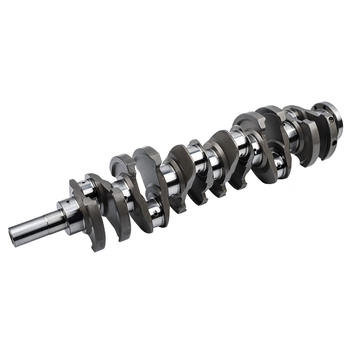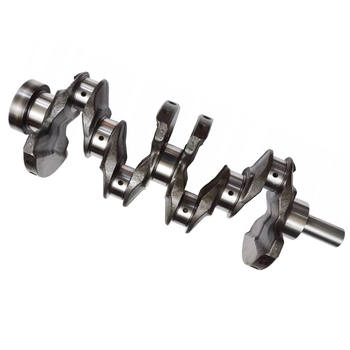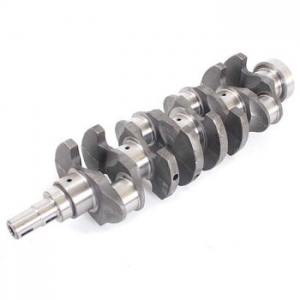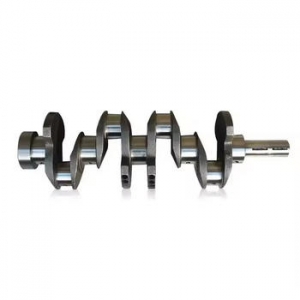The Silent Destroyer: Unraveling Industrial Engine Vibration Causes and Their Impact
In the demanding world of industrial operations, engines are the tireless heart of countless processes, driving everything from power generation to heavy manufacturing. Their smooth, consistent operation is paramount for productivity and safety. However, when an industrial engine starts to vibrate excessively, it's more than just a nuisance; it's a critical warning sign that, if ignored, can lead to catastrophic failures, costly downtime, and even safety hazards. Understanding the underlying industrial engine vibration causes is not just good practice—it's essential for maintaining operational integrity and extending equipment lifespan.
Have you ever wondered why some machinery hums along perfectly for years, while others seem plagued by persistent shaking? The answer often lies in a complex interplay of factors, both internal and external, that contribute to unwanted oscillations. Frankly speaking, identifying the root cause of vibration can be a challenging task, requiring a blend of technical expertise, diagnostic tools, and a systematic approach. But fear not; by delving into the most common culprits, we can equip ourselves with the knowledge needed to tackle these issues head-on.
The Usual Suspects: Mechanical Malfunctions
When an industrial engine starts to shake, the first place many experts, myself included, often look is at its mechanical components. These are, to be honest, the most frequent contributors to vibration. Issues here can range from subtle imbalances to severe wear, each sending distinct vibrational signatures through the machine.
Imbalance: The Wobble Effect
One of the most common industrial engine vibration causes is imbalance. This occurs when the center of mass of a rotating component does not coincide with its axis of rotation. Imagine a car tire that hasn't been properly balanced; it wobbles and shakes as you drive. The same principle applies to engine components like crankshafts, flywheels, impellers, and fans.
- Static Imbalance: This is when there's an uneven distribution of mass in one plane. It causes a heavy spot that pulls the rotor off-center. You might see this as a slow, heavy wobble.
- Couple Imbalance: Here, there are two equal and opposite heavy spots in different planes along the shaft. This creates a twisting force, leading to a more complex vibrational pattern.
- Dynamic Imbalance: The most common and complex type, dynamic imbalance combines both static and couple imbalance. It's characterized by an uneven mass distribution in multiple planes, causing both a wobble and a twist, and typically requires two-plane balancing to correct.
Causes of imbalance can include manufacturing defects, accumulation of dirt or debris (e.g., on fan blades), uneven wear, or even missing balance weights after maintenance. In my experience, even a small amount of imbalance can lead to significant vibration at higher RPMs, accelerating wear on bearings and other components.
Misalignment: When Things Don't Line Up
Another significant mechanical contributor to vibration is misalignment between coupled shafts. Whether it's a motor connected to a pump, a gearbox, or a generator, if the shafts aren't perfectly aligned, it introduces stresses and forces that manifest as vibration.
- Angular Misalignment: The shafts are at an angle to each other. Think of two lines meeting at a slight 'V'.
- Parallel Misalignment: The shafts are parallel but offset from each other. Imagine two parallel lines that don't quite overlap.
- Combination Misalignment: Often, you'll find a mix of both angular and parallel misalignment, making the vibrational signature more complex.
Misalignment puts undue stress on couplings, bearings, and seals, leading to premature failure and, of course, excessive vibration. Interestingly enough, thermal expansion during operation can also cause initially aligned components to misalign, which is why hot alignment checks are crucial for critical machinery.
Bearing Distress: The Grinding Truth
Bearings are the unsung heroes of rotating machinery, supporting shafts and reducing friction. When bearings start to fail, they become a major source of vibration. Bearing issues are among the most critical industrial engine vibration causes because they can quickly escalate to catastrophic failure if not addressed.
- Lubrication Issues: Insufficient, contaminated, or incorrect lubricant is a primary cause of bearing failure. This leads to increased friction, heat, and wear, generating high-frequency vibrations.
- Contamination: Dirt, dust, moisture, or metallic particles entering the bearing can cause pitting, spalling, and abrasive wear.
- Improper Installation: Incorrect mounting, excessive force during installation, or improper fit can damage bearing races or rolling elements.
- Overload: Exceeding the bearing's design load capacity will lead to premature fatigue and failure.
Vibration analysis is particularly effective for detecting bearing faults, often identifying them long before audible signs appear. Early detection of bearing distress is key to preventing major breakdowns.
Component Wear and Looseness
Over time, components naturally wear down. This wear, along with loose parts, can significantly contribute to engine vibration.
- Worn Gears: Pitting, spalling, or tooth wear in gearboxes can create distinct meshing frequency vibrations.
- Loose Belts or Pulleys: Belts that are too loose or worn can slip, causing uneven power transmission and vibration. Pulleys that are loose on their shafts or out of round will also contribute.
- Loose Mounting Bolts: If the engine or its components are not securely fastened to the foundation or frame, the entire assembly can vibrate excessively. This is a surprisingly common and easily overlooked cause.
- Shaft Bow or Crack: A bent shaft or one with a developing crack can cause significant vibration, often increasing with speed.
Many experts agree that regular visual inspections and torque checks are simple yet effective ways to catch these issues before they escalate.

Beyond the Mechanics: Electrical and Combustion-Related Issues
While mechanical problems often take center stage, it's crucial not to overlook other significant industrial engine vibration causes originating from electrical systems or the combustion process itself. These can be trickier to diagnose without specialized knowledge.
Combustion Irregularities: The Engine's Heartbeat
For internal combustion engines, the very process that generates power can also generate vibration if it's not occurring smoothly and uniformly across all cylinders.
- Misfires: A cylinder failing to ignite its fuel-air mixture means an uneven power stroke, leading to a noticeable shake or shudder. This can be due to faulty spark plugs, ignition coils, or fuel injectors.
- Improper Fuel-Air Mixture: Too rich or too lean a mixture can lead to incomplete combustion, knocking, or backfiring, all of which generate excessive vibration.
- Valve Problems: Sticking valves, worn valve seats, or incorrect valve timing can disrupt the combustion cycle, causing uneven cylinder performance and vibration.
- Injector Issues: Clogged, leaking, or faulty fuel injectors can lead to inconsistent fuel delivery, resulting in misfires or uneven power output from cylinders.
Frankly speaking, these issues often present as a rough running engine, and the vibration will typically be directly related to engine speed and load.
Electrical System Faults
Believe it or not, issues within the electrical system can also contribute to engine vibration, particularly in electric motors or electrically driven auxiliary components.
- Rotor Bar Problems: In electric motors, cracked or broken rotor bars can cause uneven magnetic fields, leading to significant vibration at specific frequencies (often twice line frequency).
- Stator Winding Faults: Shorted or open windings in the stator can also create magnetic imbalances and excessive vibration.
- Loose Electrical Connections: While not directly causing engine vibration, loose connections can lead to intermittent power supply to sensors or actuators, indirectly affecting engine control and causing erratic operation and subsequent vibration.
- Alternator or Generator Issues: A failing alternator or generator attached to the engine can itself be a source of vibration due to internal imbalance, bearing issues, or electrical faults, which then transmits to the engine.
It's worth noting that electrical faults often have distinct frequency signatures that can be identified through advanced vibration analysis.
Pulsation and Cavitation
While not strictly engine-internal, these fluid dynamics issues in connected systems can transmit significant vibration to the engine.
- Pulsation: Reciprocating pumps or compressors connected to the engine can create pressure pulsations in the piping that transmit significant forces back to the engine structure, causing vibration.
- Cavitation: This occurs when rapid pressure changes in a fluid cause the formation and collapse of vapor bubbles. In pumps or hydraulic systems connected to the engine, cavitation can cause severe vibration, noise, and damage.
The External Influence: Environmental and Structural Factors
Sometimes, the source of vibration isn't the engine itself, but rather its surroundings or the way it's mounted. These external industrial engine vibration causes are often overlooked but can be just as destructive.
Foundation and Mounting Problems
The foundation upon which an industrial engine rests is critical for absorbing and dissipating operational forces. A compromised foundation or improper mounting can turn a stable machine into a shaking mess.
- Weak or Damaged Foundation: Cracks, settling, or deterioration of the concrete foundation can lead to instability. A foundation that isn't rigid enough will flex and amplify engine vibrations.
- Loose or Uneven Mounts: If the engine's mounting bolts are loose, or if the mounting pads are uneven, the engine won't be securely coupled to its foundation. This allows the engine to "rock" or "walk," generating substantial vibration. Shims that are too thin, too thick, or improperly placed can also cause soft foot, leading to distortion and vibration.
- Resonance with Structure: If the natural frequency of the foundation or surrounding structure matches the operating frequency (or a harmonic) of the engine, it can lead to resonance. This amplifies even minor vibrations to dangerous levels, potentially causing severe damage to both the engine and the building.
In my experience, external factors are often overlooked during initial troubleshooting, but they are frequently the culprit behind persistent or escalating vibration issues.
Piping and Ductwork Resonance
Engines are rarely standalone units; they are connected to various piping, ductwork, and electrical conduits. These attachments can sometimes become sources or transmitters of vibration.
- Unsecured Piping: Pipes that are not properly supported or clamped can vibrate independently, transmitting these vibrations back to the engine or to other parts of the plant.
- Piping Stress: Misaligned or overly rigid piping can exert significant stress on the engine's connections, distorting the engine casing or mounts and inducing vibration.
- Flow-Induced Vibration: High-velocity fluid flow within pipes can cause the pipes themselves to vibrate, which then transfers to the engine.
External Loads and Operational Stress
The way an engine is operated and the loads it experiences can also contribute to vibration.
- Overloading: Operating an engine beyond its design capacity can lead to excessive stress on components, increased internal forces, and subsequent vibration.
- Sudden Load Changes: Abrupt changes in load can cause transient vibrations as the engine adjusts. While often temporary, repeated sudden changes can accelerate wear.
- Process-Induced Vibration: Sometimes, the process the engine is driving (e.g., a crushing plant or a reciprocating compressor) can generate its own vibrations that are transmitted back to the engine.

Proactive Measures: Diagnosing and Mitigating Vibration
Understanding the myriad of industrial engine vibration causes is the first step; the next is knowing how to effectively diagnose and mitigate them. Proactive maintenance and sophisticated diagnostic tools are indispensable in this regard.
Vibration Monitoring and Analysis
Modern industrial facilities increasingly rely on condition monitoring techniques, with vibration analysis being a cornerstone. This involves using specialized sensors (accelerometers) to measure the vibration levels and patterns of machinery.
- Baseline Data: Establishing a baseline of normal vibration levels when the engine is healthy is crucial. This allows for easy detection of deviations.
- Frequency Analysis: By analyzing the frequency spectrum of the vibration signal, experts can pinpoint the specific component causing the issue. For example, imbalance typically shows up at the operating speed (1x RPM), while misalignment often appears at 2x RPM. Bearing faults, on the other hand, produce distinct high-frequency patterns. This is a core aspect of effective industrial machinery vibration analysis.
- Trending: Continuously monitoring vibration levels over time allows maintenance teams to identify gradual degradation and predict potential failures, enabling planned shutdowns rather than reactive repairs.
I've found that investing in a robust vibration monitoring program pays for itself many times over by preventing costly unscheduled downtime and extending equipment life.
Regular Maintenance and Inspections
While advanced diagnostics are powerful, the importance of fundamental maintenance practices cannot be overstated in preventing engine vibration.
- Precision Alignment: Regular laser alignment checks for coupled machinery are critical. This ensures shafts are perfectly aligned, minimizing stress and vibration.
- Dynamic Balancing: For rotating components, periodic dynamic balancing can correct imbalances caused by wear or accumulation of debris.
- Lubrication Management: Ensuring proper lubrication—the right type, amount, and frequency—is vital for bearing health and overall smooth operation.
- Component Replacement: Adhering to manufacturer-recommended replacement schedules for wear parts like belts, bearings, and seals can prevent vibration from developing.
- Mounting Integrity: Regularly inspecting and re-torquing mounting bolts, checking for soft foot, and ensuring the foundation is sound are simple yet effective measures.
Root Cause Analysis
When significant vibration issues arise, a thorough root cause analysis is essential. This goes beyond simply fixing the symptom; it seeks to identify why the problem occurred in the first place. This systematic approach ensures that the true industrial engine vibration causes are addressed, preventing recurrence. It often involves:
- Detailed historical data review.
- Interviews with operators and maintenance personnel.
- Advanced diagnostic testing (e.g., vibration analysis, oil analysis, thermography).
- Failure analysis of damaged components.
What steps do you take to ensure your industrial engines run smoothly and quietly? Proactive maintenance, combined with keen observation and timely intervention, is the best defense against the destructive forces of uncontrolled vibration.
The Cost of Neglect: Why Understanding Vibration Matters
Ignoring excessive engine vibration is akin to ignoring a persistent cough; it might seem minor at first, but it often signals a deeper, more serious issue. The consequences of neglecting industrial engine vibration causes are far-reaching and expensive.
Firstly, prolonged vibration accelerates wear on virtually every component of the engine and its connected machinery. Bearings fail prematurely, shafts become fatigued, couplings wear out, and structural integrity is compromised. This leads to a cascade of failures, increasing the frequency and cost of repairs. Secondly, vibration is a direct drain on energy efficiency. A vibrating machine is converting useful energy into destructive kinetic energy, meaning higher power consumption for the same output. Thirdly, and perhaps most critically, excessive vibration poses significant safety risks. Components can break free, structures can weaken, and in extreme cases, catastrophic failures can occur, endangering personnel.
Many experts agree that a comprehensive understanding of engine vibration troubleshooting and the principles of industrial machinery vibration analysis is no longer a luxury but a necessity for any modern industrial operation. By proactively identifying and addressing the root industrial engine vibration causes, companies can significantly reduce operational costs, enhance safety, improve reliability, and extend the life of their valuable assets. The goal isn't just to fix a problem when it breaks, but to master preventing engine vibration before it even starts.
In conclusion, industrial engine vibration is a complex phenomenon with numerous potential causes, ranging from the obvious mechanical issues to the subtle electrical and environmental factors. A proactive approach, leveraging advanced diagnostics, rigorous maintenance, and a deep understanding of these causes, is the only way to ensure the long-term health and efficiency of your critical industrial engines.
For more detailed information, please visit our official website:industrial engine vibration causes
About the author: Dr. Anya Sharma is a seasoned industrial reliability engineer with over 15 years of experience specializing in rotating machinery diagnostics and predictive maintenance. Holding a Ph.D. in Mechanical Engineering, she has dedicated her career to unraveling complex machinery issues, particularly focusing on vibration analysis and root cause identification in heavy industrial settings. Her expertise helps companies optimize asset performance and prevent costly downtime.
 Powering Giants: Unveiling the
Powering Giants: Unveiling the
 Unlocking Power: The Essential
Unlocking Power: The Essential
 Unlocking Power: A Deep Dive i
Unlocking Power: A Deep Dive i
 Forged vs. Billet Crankshafts:
Forged vs. Billet Crankshafts:
